

Boom, roasted! Roast your own coffee with Ikawa
It seems only logical: you already own a coffee grinder and a portafilter. The next step is roasting your own coffee and, thanks to Ikawa, you can take your coffee hobby to the extreme. Overkill? Maybe. But it’s a hell of a lot of fun.
Roasting coffee at home is an age-old tradition. In Ethiopia, coffee’s home country, the coffee ceremony has been part of everyday life for centuries. The meditative act of roasting coffee is followed by the stimulating enjoyment of the black drink. Ikawa is now bringing this coffee ceremony into the 21st century with its «Smart Home Coffee Roaster System». The sleek device has exactly one button. It’s controlled via the Ikawa app. The process is very simple: 50 grammes of green beans go in at the top, the Ikawa automatically roasts them according to the app’s specifications and spits out first the silver skins and then the roasted beans at the bottom.
Before we talk about how the Ikawa works exactly, let’s have a look at the principles of coffee roasting. Luckily, I know just the right person for this. Taro Hosoe runs Hosoe Caffè in Zurich with his wife Alessandra. «Roasting coffee is almost always the same, whether I’m roasting on my big machine or you’re processing small batches on the Ikawa,» Taro says. The green coffee is heated to over 200 degrees with constant agitation and changes colour from green, to yellow, to golden brown, and finally turns into its characteristic dark brown.
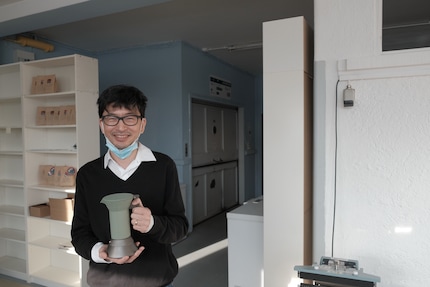
Crack (and I’m not talking drugs)
Most important is the so-called crack. As soon as the beans reach a temperature between 180 and 190 degrees, they begin to crack audibly. The bean expands, moisture escapes. «This is the most important moment in roasting. From this point on, the aroma of the coffee starts to develop...,» Taro explains. Yet just a few seconds can make the difference between perfect and burnt coffee. «You have to practise, practise, practise,» Taro laughs. I took the Ikawa Home Roaster to his roastery, including Rafael Vinhal’s green beans.
A bit unsure, I try to demonstrate to Taro how it works. I fill 50 grammes of green beans into the opening and twist. The beans drop into the roasting chamber. After that, I set the roasting curve via the app. The curve determines how hot the beans roast over the seven-minute period. I’ve done some tinkering and trial and error, so I know that the crack happens at about five minutes. According to Ikawa, that’s the ideal roasting time.
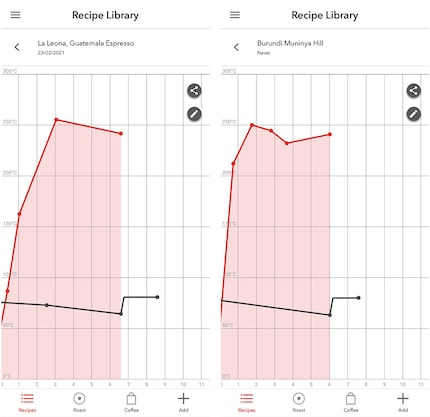
More than hot air
Now I send the roasting curve to the Ikawa and it roasts my beans automatically. A hot air stream circulates the beans inside, roasting them evenly. A small viewing hatch allows us to observe the beans in the process. However, once the curve is sent to the Ikawa, we can’t change anything about the roasting temperature. Quite the opposite of Taro’s large 5-kilo roaster. There, he can influence ventilation and temperature with knobs and track his roasting curve on a tablet. «Almost like a DJ,» Taro says and laughs.
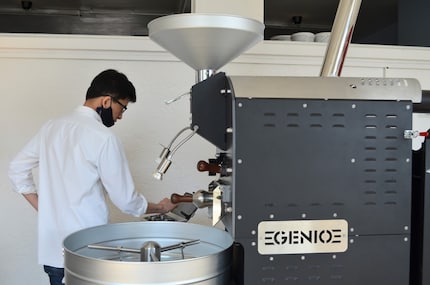
It goes without saying that the Ikawa can’t compete with a roaster in the five-figure Swiss franc range. But in fact, the professional version of the Ikawa is available in many roasting houses for test roasts. After all, it’s not worth burning kilos of coffee on a big machine just to realise that the roast tastes bad. Instead, 50 grammes can be roasted in the Ikawa, sampled and the temperature curve adjusted if necessary. If the taste is nice, the curve can be transferred to the large roaster.
Meanwhile, we clearly hear the first crack. A soft crackle after five and a half minutes. After seven minutes, the coffee is ready. Silver skins of the roasted beans have collected in the small vessel under the Ikawa. I change the container and press the button, which catapults the beans into the container with a very satisfying rattle. Ready is the home-roasted coffee. Coffee expert Taro looks at the roasted beans. «Looks good,» he says, smelling the freshly ground and cooled beans. These now need at least one day for remaining gases to escape. The aroma is ideal after circa three days. You always need to keep that in mind when roasting.
Experiments
What does Master Taro think of the little roaster? «A great device for you as a beginner. It reminds me of my first time trying a popcorn machine. It actually works very similarly, but I couldn’t control the temperature at all.»
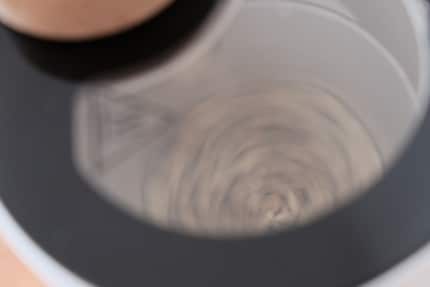
Thanks to the temperature curve, experimenting is fun with the Ikawa roaster. Already included are some green coffee beans and recipes. Scan the QR code on the back and you’re done. But that’s where the fun really begins. Changing roast curves drastically and comparing two roasts to each other is super exciting. Flavours that aren’t present at all in a hot roast can be clearly discerned at lower temperatures and shorter development times after the first crack. If you compare a light and a dark roast of the same coffee, it’s obvious: it’s like night and day. Mix different coffees after roasting to make your own home blend.
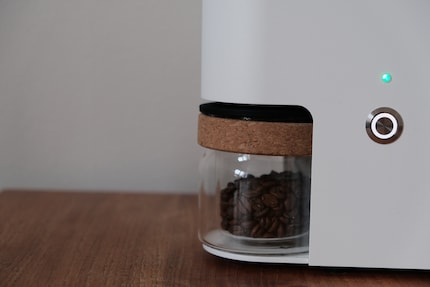
Roasting is my new hobby. I love to experiment, and I do that for hours with the Ikawa. Especially because the app works so seamlessly and reliably. I’ve already tested dozens of devices with Bluetooth connectivity, some from major manufacturers. None work as smoothly as the Ikawa app. The design is simple and logical, the experience isn’t complicated by unnecessary bells and whistles. The same goes for the roasting process. Weigh out 50 grammes, fill, press start. And that’s it. At the same time, the 50 grammes are both a curse and a blessing. On the one hand, this small quantity allows for experimentation. On the other hand, it takes time if you want to roast larger quantities of your favourite recipe. Because the beans need to sit for at least 24 hours, you’ll need to plan ahead a bit. Good things come to those who wait.
Verdict
The Ikawa Home Roaster is the absolute antithesis of capsule coffee, and I love that. It takes time, patience and knowledge to roast your own coffee. For this you will be rewarded with your coffee. Whether fully automatic, filter or portafilter: if you enjoy coffee, I recommend this device. I’ll admit, the price is high. There are far cheaper alternatives to the Ikawa. However, the potential for frustration is also exponentially higher, as the temperature can’t be controlled and roasting is less uniform. There are also cheaper home roasters, which require more space and manual input and look less stylish. Seen in this light, the Ikawa Home occupies its very own niche: you can experiment, but you don’t have to. Or just enjoy the fully automatic coffee roasting experience.

P.S. I was made aware of this video by AlexiBexi from several sites. In it, he claims that roasting at home produces toxic substances, so you should keep your hands off it. I checked with the pros. The Ikawa is perfectly safe if you don’t burn your coffee completely. Unfortunately, AlexiBexi didn’t link the sources of his statements anywhere. Do your own research.
When I flew the family nest over 15 years ago, I suddenly had to cook for myself. But it wasn’t long until this necessity became a virtue. Today, rattling those pots and pans is a fundamental part of my life. I’m a true foodie and devour everything from junk food to star-awarded cuisine. Literally. I eat way too fast.


